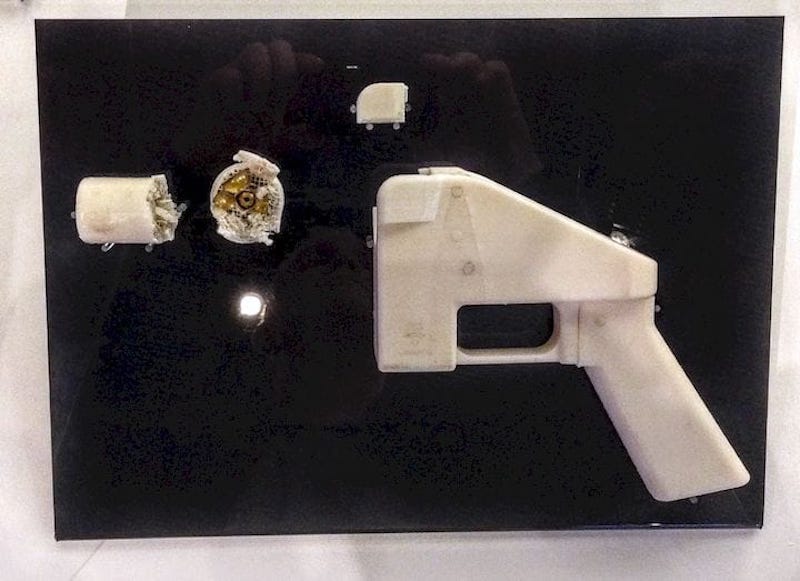
Legal changes suggest the market for 3D printed weapons may soon shrink in the United States.
The topic of 3D printed weapons has been around for as long as there have been 3D printers. Eventually some curious folks designed handheld weapons that could be 3D printed. However, these initial designs were fraught with problems, and the weapon operator was as likely to be hurt as anyone else.
However, there were those who continued to pursue the idea of 3D printed weapons over the last few years, enabled by a loophole in US legislation.
The US Bureau of Alcohol, Tobacco and Firearms (ATF) had defined a weapon as a specific collection of parts, with one part in particular being the key to the mechanism. This part, the lower receiver, was required to have a serial number. In this way ATF hoped to track all weapons — because it’s not a weapon unless it has a lower receiver.
This more or less worked until it was discovered that this key component could be produced independently outside of the serial number authorities, sometimes by 3D printing. This loophole led to the emergence of “gun kits”, which contain all the required components — except the serial numbered part. That part could be obtained through other means — including 3D printing. Then by assembling it all one could produce a fully functional, but untracked weapon.
This practice has led to a proliferation of gun kits and what some call “ghost guns”: weapons with no official history. That’s not good for law enforcement nor society, as it turns out most of the buyers of gun kits were those who were unable to procure weapons through normal channels due to problems with prior criminal activity.
The news is that the US has changed the laws regarding such weapons. Going forward the gun kit providers will also have to serialize their parts, thus making the ghost guns trackable. They will no longer be ghosts.
In The Guardian report linked below, deputy chief legal counsel for Giffords law center David Pucino explained:
“[Ghost guns] are perfect for gun traffickers to put in the illegal market because they are more readily available at lower prices. The only people who will be affected by the rule are those who want to traffic them and can’t walk into a gun shop and get one because of their record.”
While these new regulations won’t directly affect those involved in 3D printing weapon parts, they will affect the kit producers, who now find themselves to be manufacturers of weapons, according to the new ATF definition.
This could mean a shift away from 3D printed weapons in the future, as the market for producers of kits will almost certainly drastically contract.
Via The Guardian
